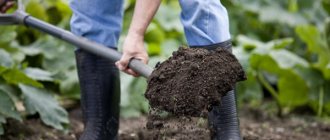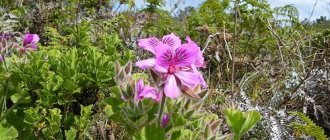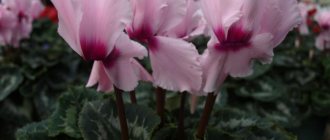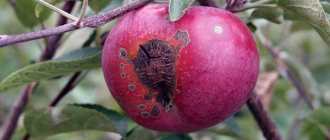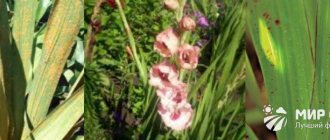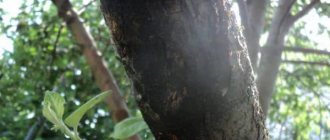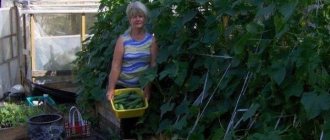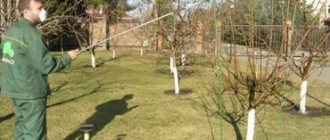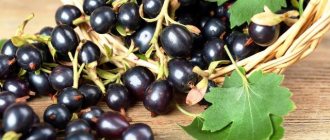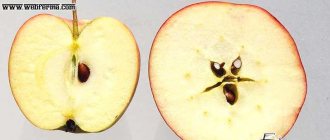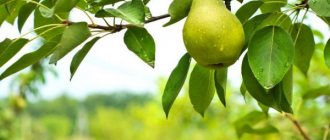Diseases of stone fruit crops. Gomoz, Clusterosporiosis
Diseases of stone fruit crops.
Gomoz, Klyasterosporiosis The disease manifests itself in the form of leakage of gum (a thick, yellowish liquid) with a sticky consistency, which, after drying, turns into a glassy mass. Gum is released in cracks in the bark, on thick and thin branches. There are many reasons for the release of gum: mechanical damage to the bark and wood, damage by parasitic fungi, viruses and bacteria, incompatibility of the rootstock and scion, etc. In all cases, the release of gum is a reaction of trees to irritation of the external environment. In apricot and peach, gum is often released on thin branches as a result of damage by clasterosporia and moniliosis.
Diseases of stone fruit crops. Gomoz, Clusterosporiosis
Gomoz (leakage of gum from stone fruits). The disease manifests itself in the form of leakage of gum (a thick, yellowish liquid) with a sticky consistency, which, after drying, turns into a glassy mass.
Gum is released in cracks in the bark, on thick and thin branches. There are many reasons for the release of gum: mechanical damage to the bark and wood, damage by parasitic fungi, viruses and bacteria, incompatibility of the rootstock and scion, etc.
In all cases, gum secretion is a reaction of trees to irritation of the external environment. In apricot and peach, gum is often released on thin branches as a result of damage by clasterosporia and moniliosis.
Measures against Gomoz
is high agricultural technology in the garden, careful cultivation, timely and reliable protection against fungal diseases, whitewashing of trunks and forks of skeletal branches to avoid sunburn and frost. Areas of dead bark and wounds from which gum is released are cleaned with a sharp knife, disinfected with a 1% solution of copper sulfate and covered with garden pitch.
Clusterosporiasis, or perforated spotting
. The disease affects all stone fruits, but apricot and peach suffer the most from it. Its causative agent affects all above-ground organs of the plant: buds, flowers, fruit ovaries, fruits, leaves, young shoots and relatively thick branches. The fungus overwinters in the form of mycelium and conidia in infected buds, bark and gum.
In early spring, conidial sporulation develops. During rains, conidia that have overwintered are released from under the bark and from the softened gum. Together with water, they fall on healthy leaves and shoots and infect them.
The most dangerous is infection
annual shoots and skeletal branches. On young shoots, small spots with a diameter of 2-5 mm of bright orange-red color first form. Subsequently, they increase in size and become longer. Often the spots form around or below the bud. The middle of the spot is almost always lighter.
Ulcers appear at the site of the spots, which increase as the shoots grow. Infected branches dry out in the first year or at the beginning of the next. Conidia of the fungus accumulate in them, which flow with rainwater onto healthy branches and penetrate into them through buds or through a dried cut. At the site of infection, ulcers appear, from which gum is secreted.
Even more dangerous is infection
Clusterosporiasis of young seedlings in fruit nurseries or in a permanent place in the garden in the 1st-2nd year after planting. Then chronic ulcers form on the trunk or at the base of the skeletal branches. They distort and weaken the tree, and often lead to its premature death.
The fungus begins to develop at a temperature of + 4-5 ° and a relative humidity of at least 68-70%. The optimal temperature for the development of the disease is + 18-22 °. At temperatures above 30° and relative humidity less than 68%, the development of the fungus stops.
In spring, the disease affects the leaves. Round brown spots with a diameter of 3-5 mm are formed on them. The infected tissue falls out after 5-7 days, and round holes (holes) form on the leaves. This is where another name for the disease comes from: perforated spotting.
A very dangerous form of the disease
, especially in peach, is infection of fruit buds. Autumn infection intensifies in winter during thaws, and in spring infected buds fall off. Unlike frostbitten ones, flower buds damaged by clasterosporiasis look black, slightly shiny because their scales are impregnated with gum.
Microscopic analysis shows that the pathogen in the form of mycelium and conidia accumulates between the scales. They are the source of infection of healthy tree organs.
The degree of infection of apricot and peach with clasterosporia blight largely depends on weather conditions and varietal characteristics. Representatives of the varietal types Arzami, Ahrori, Khurmai and other varieties of the Central Asian group are very sensitive to klyasterosporiosis; for peach - Golden Jubilee, Triumph, Champion, Amoden, Alexander, Salvay.
Relatively resistant varieties have proven to be: for plums - Renklod green, Hungarian Azhanskaya, Anna Shpet, Kirk, Hungarian Domestic, for apricots - Hungarian Best, Louise, Red-cheeked, Pineapple, for cherries - Lyubsky, Erdskaya Harvest. Meteor early, Uyfegertovskaya gronoidny, Napoleon pink, Valery Chkalov, in peach - Elberta, Greensboro, Kyiv early, Cardinal, Favorite Morettini, Hale.
Protection of stone fruits from clasterosporiasis is
in sanitary care (removal and burning of infected shoots and branches in autumn and spring before the start of the growing season), a high level of agricultural technology and the use of chemical control agents. The surface of the cuts should be disinfected with a 1% solution of copper sulfate and covered with garden pitch.
Practice has shown
that two high-quality and timely spraying with a 3% solution of Bordeaux mixture almost completely protects trees not only from clasterosporiasis, but also from some other fungal diseases, including leaf curl in peach. Autumn spraying should be carried out during the period when the leaves have turned yellow and begin to fall.
Spring spraying with 3-4% Bordeaux mixture before buds open almost completely eradicates the harmfulness of spring and summer infection of shoots, leaves and fruits with clasterosporiasis.
Regarding peach, it should be remembered that in the summer it cannot be sprayed with Bordeaux mixture and other copper preparations. Copper preparations, even in a 0.5% concentration, cause burns to the leaves, causing them to fall off 5-10 days after spraying.
If, during persistent humid and warm weather, there is a need for additional spraying against fungal diseases, then you can use Benlat (fundozol) of 0.1-0.2% concentration.
Comprehensive measures against perforated spotting
To combat clasterosporiasis, the following preventive measures are taken:
- Autumn pruning, removal and burning of not only diseased branches of fruit trees, but also dried branches. "
- Timely cleaning and burning of fallen leaves;
- Application of organic and mineral fertilizers;
- Treatment of row spacing followed by removal of rhizomes and other weed residues.
- Treatment with organic sprayers.
It is advisable to carry out the above measures to protect healthy fruit plants on the site. It is important to remember that trees most often experience two outbreaks of the disease: the first in June-July, the second in mid-September.
How FORUMHOUSE participants treat diseases of cherries, plums, apricots, cherries, cherry plums, bird cherry.
Stone fruits are more susceptible to fungal diseases than pome fruits. They literally, as they say on FORUMHOUSE, “collect all sorts of crap.” This year, in many regions of our country, spring was long, protracted and cold - and these are the most suitable conditions for the causative agents of a number of fungal diseases. Rot, scab, and spotting seem to have conspired to leave us without a harvest!
In this article we will talk about the main and most dangerous diseases and how the gardeners of our portal cope with them.
Drain pockets
This fungal disease of stone fruits is rapidly taking over more and more territories, surprising gardeners: why do pods appear on bird cherry trees instead of berries? What are these strange hernias on plums?
A participant of our portal also discovered such formations on the fruits of her plums.
Please advise what to do! We found such deformed fruits on plum trees in different parts of the site, on young and old trees.
This disease is plum pockets, the causative agent of which, the fungus Taphrina pruni Tul., also affects cherries, plums and cherries. The disease can destroy up to 70% of the crop.
In winter, the fungus that causes the disease waits in the wings in cracks in the bark, in the buds, in the branches, and in the spring it begins to form colonies. Fungal spores infect the flowers of the plant, but usually the disease manifests itself on the fruits. They swell and become ugly; Bird cherry produces pods instead of berries, like legumes. The fruits are painted pale green and covered with a waxy coating. The seed does not develop, the fruit remains hollow inside. Most often, diseased fruits dry out and fall off, but sometimes remain hanging on the tree.
Clusterosporiasis of stone fruits
Another name for the disease: perforated spotting. Usually, brown spots first appear on the fruit, soon they swell, spread, and the entire fruit becomes covered with a rough crust. Infected fruits of cherries, cherries and peaches can be identified by a dent right down to the pit. Plums rarely develop hole spot. When storing fruits, the infection is not transmitted - only in the garden.
The whole plant suffers from this disease: leaves, branches, shoots. Typically, spots appear first on the leaves and then spread further.
This fungus is perhaps the most dangerous for stone fruits - the pathogen is activated twice during the growing season, in spring and autumn. Fungal spores actively develop at a temperature of +20 degrees, but they are resistant to all climate conditions and can live on the plant for years.
The fungus overwinters in gum and in fallen leaves (the dormant period in leaves can last for several years until animals, insects or birds transfer the spores to a suitable tree or bush).
To prevent hole spotting, standard measures are used: removing fallen leaves from the garden, removing and destroying affected parts of plants. The cutting areas must be treated with garden varnish.
Chemicals will be most effective when providing comprehensive garden protection. Twice a season, before the leaves bloom and during leaf fall, all stone fruits are treated with:
- solution of copper sulfate (3%)
- Bordeaux mixture (3%).
Additional treatment is carried out a week before flowering (or right during flowering) and two weeks after flowering.
At FORUMHOUSE, Skor, Chorus, and Signum are used for such professional treatments.
Copper-containing on bare branches. At the beginning of flowering, Horus (against moniliosis and clasterosporiasis). After flowering - depending on the situation. If I see the beginning of a defeat, then Skor. If it’s damp at the end of summer, I repeat Skor.
FAQ
Question No. 1. How many days pass from the moment the spores hit the trees until the first signs of the disease appear?
Depends on air temperature and tree varieties, on average 10-15 days.
Question No. 2. Is it worth fighting the disease if most of the fruit tree is affected?
It is advisable to cut down trees when the damage is more than 50-60%. In other cases, diseases are eliminated with the help of chemicals.
Question No. 3. Why is it not recommended to use Bordeaux mixture when treating trees affected by clasterosporiasis?
Scientists have found that Bordeaux mixture negatively affects the further development of fruit trees, namely, trees and fruits are capable of accumulating toxic substances of the drug.
Question No. 4. When is the last time to treat affected trees with hole spot?
The last treatment of affected trees is carried out no later than 3 weeks before harvest.
Coccomycosis of stone fruits
This mushroom is a real disaster for cherries. It usually appears in late spring as small, rust-like spots on the leaves.
If no measures are taken, the leaves dry out and curl. It is the coccomycosis cherry that has watery, unsweetened fruits.
The causative agent of coccomycosis usually selects weakened and neglected plants. The better the care of the cherry, the better it resists fungal diseases.
But in summer, rich in rain and fog, this infection spreads to healthy plants. But felt cherries and cherry-cherry hybrids do not suffer from coccomycosis.
To prevent this dangerous disease, spraying with the same copper-containing preparations is used.
- before buds open – 3% solution of Bordeaux mixture;
- at the end of flowering - 3% solution of copper sulfate;
- After harvesting, repeat the treatment with a solution of Bordeaux mixture.
- After leaf fall, repeat the treatment with copper sulfate solution.
To treat coccomycosis, members of our portal use Fitosporin, Nitrafen, Captan, Horus, Skor and other drugs.
Last year we had an outbreak of coccomycosis infection in the middle of the summer - after the harvest. In the spring, no one treated cherries against this scourge. I bought Horus + SKOR, sprayed all the cherries - once, the leaf fall stopped. The trees with leaves survived until autumn.
If signs of the disease are detected during the fruiting period, and you do not dare to use “chemistry,” you can try to help the plant with a folk remedy for coccomycosis: once a week, treat the plant with a solution of soap and wood ash (5 liters of water, 1 kg of ash and 30 g of grated laundry soap ).
Moniliosis of stone fruits
Moniliosis, or gray fruit rot, is also a fungal disease, the causative agent is the fungus Stromatinia cinerea Aderh. It is easy to recognize: a brown spot gradually spreads throughout the fruit, and soon gray pads filled with fungal spores appear in its place.
It can occur not only in the form of rot, but also in the form of a burn: in the spring, fruit shoots seem to be burned by fire, they dry out; dry leaves do not fall off for a long time. The infection persists in these “burnt” branches.
To prevent moniliosis, they are treated with copper-containing preparations, in the same way as for coccomycosis, but the second treatment is performed not at the end of flowering, but along the pink contour.
The virus enters the fruit through the flower, which is why it is recommended to spray on a pink cone.
At the first signs of the disease, the affected branches of the plant are pruned and destroyed, and insects that carry this disease are poisoned. Treatment with Chorus, Fundazol, Topaz, and Strobi gives good results.
Which trees are at risk and under what conditions?
Clusterosporiasis is most often observed on apricots, cherries, plums, peaches, and cherries. The pathogen affects stone fruit trees. The fungus multiplies on all parts of the plant, from the trunk to the leaves.
The causative agent of the disease multiplies most effectively in the remains of vegetation that has been affected. It overwinters in it in the form of spores. They are very resistant to any weather conditions, so they can live for several years. They overwinter either on the surface of wood or in fallen leaves that were not removed in a timely manner.
The spread of fungal spores occurs by birds, which carry it on their bodies, or by rain or wind.
Stone fruit scab
The causative agent of scab is the fungus Cladosporium. It harms stone fruits in the same way as most other fungi: it appears as an olive-colored spot that gradually grows and turns black.
Stone fruit scab is widespread in the southern regions. Winter thaws and late spring frosts, frequent rains in May at a temperature of +25 degrees are favorable for it. It spreads quickly on plants planted in lowlands, on heavy, clay soils, and unventilated areas.
Heat, drought and good ventilation stop the development of the fungus.
Sometimes the weather just helps - dry heat comes and the mushrooms are finished.
To prevent scab, spraying with preparations containing copper is used, plus specialized spraying against scab (twice with systemic fungicides, with an interval of two weeks).
Summarizing
Healthy plants resist fungal diseases much better than weakened ones. It’s not for nothing that horticultural scientists constantly talk about the importance of agrotechnical measures.
If a gardener promptly removes fallen leaves in the garden and cleans the entire area adjacent to the site, digs up the tree trunk circle in the fall, and does not plant stone fruits in lowlands where fog accumulates, then he has a much greater chance of protecting his favorite plants from rot and spotting.
The crown should not be allowed to thicken - every branch must be ventilated!
If everything is OK with the plant, preventive treatment with copper containing fungi in the fall and spring is sufficient. Prophylactically with biological products such as phytosporin.
Pruning, mulching, watering and fertilizing regimes increase the tree's resistance and reduce the need for treatments.
Read our article about pomaceous diseases, effective drugs for them and treatment regimens. Find out how to treat a diseased apple tree. Watch a video on how to save even a hopeless fruit plant: a famous scientist-breeder tells and shows how to make a bridge graft.
Harmful and terrible kleasterosporiosis
The wide distribution of this crop in gardens is hampered by the trees' relatively low frost resistance and high susceptibility to fungal diseases - especially clasterosporiasis.
This disease affects not only peaches, but also other stone fruits: apricot, sweet cherry, plum, cherry plum, cherry. In apricot, leaves and fruits are affected, in cherries and cherries, mainly leaves are affected. Small reddish spots first form on them, which then become yellow-brown with a crimson border around the edges. Affected leaves fall off.
Peach clasterosporiasis affects everything: leaves, stipules, developing buds, young branches. The most dangerous damage is to overgrowing twigs and skeletal branches of wood that bears crops.
First, the base of the branch is affected at the junction of it with the skeletal branch. Here the bark bursts and gum comes out, necrophytic fungi settle in, corrode the wound - and ulcers form. Little by little the branch dries out.
The infection accumulates in the affected shoots, which flows with rainwater into the area of the annual ring and penetrates into new shoots through the lentils.
The fungus can penetrate the twigs through any injuries, bruises, fractures, scratches, bark beetles, etc. If you don’t fight, then within two to three years all the branches will be covered with ulcers. First, individual branches dry out, and then the entire tree dies.
In spring and summer, fungal spores are carried by wind, rain, insects, animals and people. In fact, stone fruit infestation occurs almost all year round. Only at temperatures above plus 30 degrees and air humidity of 65-70% does the infectious process stop.
Distribution scheme
The fungal disease spreads on stone fruit trees throughout the growing season. Tree damage occurs according to the following scheme:
- At the initial stage of the lesion, small dark inclusions with a diameter of no more than 1 mm are formed on newly blossoming leaves. The inclusions are round in shape with a pale yellowish color.
- The inclusions increase over time and grow up to 10 mm in diameter, acquiring a dark brown or brown color.
- Most of the spots dry out, crack and fall off after 10-15 days, thus forming many holes on the surface of the leaves. The holey leaves turn yellow and fall off.
Kidney damage occurs mainly during the period of relative dormancy of trees. Most of the affected buds do not open and become covered with gum. Such buds dry out, acquire a dark color, do not fall off and retain fungal spores in their scales. Such spores overwinter in the form of mycelium and condia, and in the spring they continue to oppress the above-ground parts of trees.
The second stage is followed by an increase and darkening of the dots. If you look closely, they are similar to birthmarks.
At the end of the entire path, holes grow in the spots, which over time grow and “kill” the entire leaf. Over time, all affected parts lose color and fall from the branches.
The main reason why clusterosporiasis appears is a microorganism. This is a parasitic fungus that lives in the tissues of fruit trees. The optimal temperature for the growth of the fungus is considered to be 20 degrees; special activation occurs during the rainy season.
Primary infection is observed in early spring, when the average daily air temperature reaches 5 degrees. This is the period when plant immunity is most weakened. Therefore, the mycelium of the fungus freely penetrates cracks in the bark and infects trees. Subsequently, active reproduction of spores occurs. The growth process occurs very quickly, only 20 hours is enough. But the first signs will become noticeable after six days.
What to do
By destroying the infection of clasterosporia on peach, we neutralize the main source of primary infection and protect other stone fruit crops from this disease. We also save the harvest and the tree itself.
The algorithm for combating infection is as follows:
In November, after the leaves have fallen, it is necessary to carefully remove all drying, diseased shoots. Fallen leaves, dead branches, mummified and rotten fruits must be burned, otherwise they will become sources of primary infection of trees in the spring.
Using a thin-pointed knife, cut out the diseased areas, capturing all diseased wood down to healthy tissue. Periodically dip the knife in a strong solution of potassium permanganate for disinfection.
Next, treat open wounds with a solution of copper sulfate (10 liters of water, 150 g of composition). After this, treat all sections with mullein solution (one part fresh cow dung + one part clay).
Manure contains auxin substances, which promote rapid wound healing. If there is no mullein, then the cuts should be treated with ordinary brilliant green.
After treating the wounds, the entire tree is thoroughly washed with pesticides. It could be:
- Nitrafen solution (300 g);
- “DNOC” (100 g);
- 3% Bordeaux mixture (300 g of copper sulfate + 300 g of fresh quicklime);
- “Chorus” (2-3 g).
Dilute everything in 10 liters of water. Of these drugs, one “Chorus” suppresses spores of clasterosporiasis, moniliosis, and leaf curl.
This procedure is carried out in late autumn. In the spring, at the “pink bud” stage (the first time) and immediately after the end of flowering (the second time), peach trees are treated with 1% Bordeaux mixture.
Instead, you can use “Kuproskat” (50 g per 10 liters of water) or a mixture of “Ridomil” and “Chomecin” (15 g + 20 g). “Ridomil” is used only in mixture with other contact fungicides.
You can use “Benlat” (foundazole) - 10 g per 10 liters of water. It simultaneously suppresses clasterosporiosis and powdery mildew. “Zineb” is not recommended for use, as it stimulates the development of powdery mildew.
Before the onset of frost, the trees must be completely sprayed with 3% Bordeaux mixture or the entire crown whitened with this mixture: for 1 kg of lime, take 150 g of glue, 50 g of copper sulfate and dilute everything in 5 liters of water. This amount is enough for one adult tree.
It has been proven that in peach trees whitened or treated with Bordeaux mixture, up to 90% of the flower buds are preserved during the February thaw, while in those not whitened the same number of buds die.
The buds and branches of whitewashed trees, reflecting the sun's rays, heat up slightly and remain dormant. They are less damaged by returning cold.
Other operations
It is forbidden to apply reserve fertilizers to trees, as this delays the growing season. The plant does not have time to prepare for winter and freezes heavily.
Fungal diseases actively develop on a weakened tree. Moisture-charging irrigation is carried out only if the soil is dry and there has been no rain for a long time.
If a young peach tree has grown from a seed in your garden, then do not touch it, do not replant it, do not graft it in the spring, wait until the first harvest.
In the vast majority of cases, a tree grown from a fruit seed of a rooted (ungrafted) tree retains all the maternal qualities of the fruit: size, shape, color, weight, taste.
From an early age, it adapts well to local soil and climatic conditions, almost does not get sick, grows well and produces fruit every year.
Often in severe winters, the entire above-ground part of seedlings dies. It needs to be cut off. In the spring, 4-5 (or more) shoots begin to grow from a powerful root, which reach 1.5-2 m in one season. The next year they produce a harvest.
At a young age, such trees usually do not have time to properly prepare for winter. Therefore, in late autumn, their trunks must be covered with a mound of soil 25-30 cm high; it will protect the root system from frost.
Analysis of 5 folk ways to combat perforated spotting
Traditional methods of combating such a disease of fruit trees as hole spot are ineffective. Experienced gardeners suggest resorting to their help only as additional means of combating fungus. There are five most effective recipes in the fight against clasterosporiasis:
- Slaked lime. Such raw materials can be purchased in finished form. Lime concentrate is mixed with water in a ratio of 1:5. Treat tree trunks with the resulting solution using a brush or roller at intervals of 10-15 days.
- Tincture of dry mustard leaves. Dry raw materials are brewed in the following proportions: 1 kg per 15 liters of water. Leave for 48 hours. Before use, filter the infusion. And the above-ground parts of the trees are sprayed.
- Infusion of horse sorrel root. Prepare the infusion several hours before use. 1 kg of roots is ground to a mushy mass and 20 liters of hot water are poured. The resulting mixture is left to infuse for approximately 6 hours, filtered, and the processing of the trees begins.
- Tobacco infusion. To prepare the infusion you will need 2-3 kg of dry raw tobacco, 500 g of laundry soap and 20 liters of hot water. The tobacco is placed in a container and filled with hot water, the resulting mixture is left to infuse in a dark place for 48 hours. It is not recommended to dilute the resulting concentrate.
- The gum is removed manually, and the cracks in the trunks are treated with 3% copper sulfate.
| Methods | Efficiency |
| Slaked lime | 35-40% when using other more effective methods |
| Tincture of dry mustard leaves | |
| Infusion of horse sorrel root | |
| Tobacco infusion. | |
| Gum removal |
- Slaked lime. Such raw materials can be purchased in finished form. Lime concentrate is mixed with water in a ratio of 1:5. Treat tree trunks with the resulting solution using a brush or roller at intervals of 10-15 days.
- Tincture of dry mustard leaves. Dry raw materials are brewed in the following proportions: 1 kg per 15 liters of water. Leave for 48 hours. Before use, filter the infusion. And the above-ground parts of the trees are sprayed.
- Infusion of horse sorrel root. Prepare the infusion several hours before use. 1 kg of roots is ground to a mushy mass and 20 liters of hot water are poured. The resulting mixture is left to infuse for approximately 6 hours, filtered, and the processing of the trees begins.
- Tobacco infusion. To prepare the infusion you will need 2-3 kg of dry raw tobacco, 500 g of laundry soap and 20 liters of hot water. The tobacco is placed in a container and filled with hot water, the resulting mixture is left to infuse in a dark place for 48 hours. It is not recommended to dilute the resulting concentrate.
- The gum is removed manually, and the cracks in the trunks are treated with 3% copper sulfate.
35-40% when using other more effective methods
| Methods | Efficiency |
| Slaked lime | |
| Tincture of dry mustard leaves | |
| Infusion of horse sorrel root | |
| Tobacco infusion. | |
| Gum removal |
Growing seedlings from seeds
If you still have peach seeds, you can sow them in the ground in November. It's done like this. Determine where the seedlings will grow. In selected places, the soil is loosened to the depth of the fork teeth, and after applying organic fertilizers, it is compacted with abundant watering.
When the soil dries slightly, 3 seeds are sown in a triangle at a distance of 40-45 cm from one another. Peach has a very long stratification period - 140-180 days, seed germination is low. Three seeds are planted in the hope that at least one of them will germinate.
When studying the root system of peach seedlings, it was found that in one growing season, with good care, the seedling grows up to 70-100 cm; it has a powerful root system in the form of an inverted cone. The depth of the roots is 30 cm. The longest upper roots (14-17 cm) extend from the trunk in all directions.
Hence the conclusion: if two seedlings have grown from three planted seeds, then one of them remains to grow on a permanent basis, and the second can be carefully transplanted to another place without damaging its neighbor.
The seeds are planted to a depth of 6-7 cm with the ridge up. It is not advisable to lay them flat or vertically, as this hinders the growth of the primary root and sprout. Regardless of soil moisture, instead of planting, water it abundantly and cover it with a layer of mulch 6-10 cm thick.
Mulch evens out heat, air and humidity conditions. Worms, eating mulch, will enrich the soil with humus, making it loose, air- and water-permeable.
The peach seedling grows actively, forming shoots of the first, second and even third order. If you clean up the stems from the lower side shoots in time and regulate the number of shoots on the tree, then by autumn crowned trees up to a meter high will grow. It is better to carry out any transplants in the spring and with a clod of earth.
If necessary, seedlings are grafted by budding in early August. To be on the safe side, you need to occlude 2-3 buds from different sides at a distance of 10-12 cm from one another.
Varieties resistant to damage
The State Register of Breeding Achievements approved for use on the territory of the Russian Federation in 2021 included 68 varieties of domestic plum, 48 Chinese plum and 25 cherry plum (Table 1, 2).
| Variety | Region of admission |
| Homemade plum | |
| ® Alexy | 3 |
| Anna Shpet | 6, 8 |
| Ballad | 6 |
| Fugitive | 6 |
| Bogatyrskaya | 8 |
| Bolkhovchanka | 3, 5 |
| Hungarian Korneevskaya | 5 |
| Hungarian Kuban | 6 |
| Hungarian Moscow | 3 |
| Hungarian Pulkovskaya | |
| ® Evening bells | 7 |
| Quiz | 6 |
| ® Viola | 7 |
| Vitebsk late | 3 |
| Volgogradskaya | 8 |
| Volzhanka | 7 |
| Volga beauty | 3, 7, 8 |
| Galatea | 7 |
| ® Debut | 6 |
| Zhiguli | 7 |
| Entertaining | 3 |
| Zarechnaya early | 5 |
| Indira | 7 |
| Kabardian early | 6 |
| ® Kazanskaya | 4, 7 |
| ® Canthemization | 3 |
| Cromagne | 3 |
| Kuban legend | 6, 8 |
| Kuban early | 6, 8 |
| Kuban dwarf | 6 |
| Kuibyshevskaya blue | 7 |
| Milena | 6 |
| Peaceful | 7, 8 |
| Nizhny Novgorod | 4 |
| Night | 5 |
| Nika | 5 |
| Autumn souvenir | 6 |
| Memory of Timiryazev | 3, 7 |
| ® Memory of Finaev | 7 |
| Memory of Khasanov | 7 |
| Predgornaya | 6 |
| Prikubanskaya | 6 |
| Rakitovaya | 7 |
| Renklod Kolkhozny | 2, 3, 5 |
| Renklod Kuibyshevsky | 2, 7 |
| Soviet Renklod | 5, 6, 7 |
| Renklod Tenkovsky | 4, 7 |
| Renklod Kharitonova | 5 |
| Renklod Shcherbinsky | 4 |
| Extra early | 4, 7 |
| Svetlana | 7 |
| ® Firefly | 5 |
| ® Blue Gift | 3 |
| ® Blue Bird | 6, 8 |
| Red early ripening | 2, 3, 5, 7 |
| Early ripening round | 2 |
| Smolinka | 3 |
| Starting | 5 |
| Stanley | 6 |
| Sukhanovskaya | 3 |
| Tenkovskaya dove | 7 |
| ® Morning | 3 |
| Fijinka | 6 |
| Purple | 3 |
| Chachak's finest | 6 |
| Etude | 5 |
| Egg blue | 3 |
| ® Yakhontovaya | 3 |
The “®” symbol marks varieties protected by patents for breeding achievements.
| Northern | 1 |
| Northwestern | 2 |
| Central | 3 |
| Volgo-Vyatsky | 4 |
| Central Black Earth | 5 |
| North Caucasian | 6 |
| Middle Volga | 7 |
| Nizhnevolzhsky | 8 |
| Ural | 9 |
| West Siberian | 10 |
| East Siberian | 11 |
| Far Eastern | 12 |
The most effective method of getting rid of hole spotting is considered to be planting trees that are resistant to the disease. But such species have one drawback - they are not distinguished by high yield and quality of fruits.
Apricot
The most resistant apricot varieties include:
- Pineapple is a tree with light yellow fruits that can be used both for food and for making jam.
- The Red-cheeked variety has good yield. You can see bright red spots on its fruits.
Peach
Peach clasterosporiasis can be avoided if you choose the following varieties:
- "Greensboro" is an early ripening variety with large greenish-cream colored fruits. But peaches of this variety are unsuitable for transportation.
- “Cardinal” is a variety that produces juicy and early orange fruits.
- The Kyiv Early variety is ideal for temperate climates. This is an unpretentious, frost-resistant crop. The color of peaches is bright orange with reddish spots.
Among the cherry trees resistant to the disease, the following varieties stand out:
- “Amateur” is a tree that produces a high yield with an average ripening period. The fruits are rich red in color with bright taste and aroma. They can be used both raw and canned.
For industrial purposes, a variety is selected that is resistant to stone fruit blight, called “Lyubskaya”.
